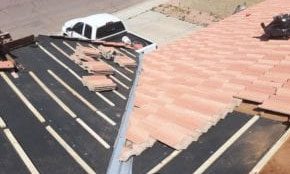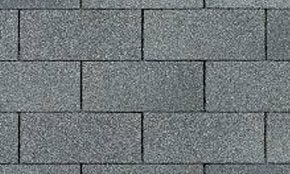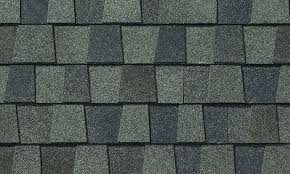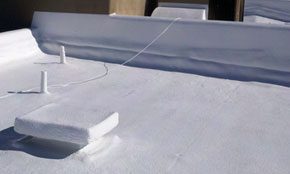It Depends on the Roof Type. Roofing Costs vary because there are many different roof types in Arizona that will affect how much should pay a roofer to do your roof.
Each type of roof has a different price tag attached to it. In this blog, we will explore the prices of each type of roof available in Arizona to figure out how much you should pay a roofer.

Let’s look at how much you should pay a roofer for a concrete tile roof. A Concrete Tile roof per square (or per 100 square feet) costs $400 to $700 per square for an “R and R” (to remove the tile and replace the existing tile underlayment and reuse the same roof tiles).
'Reusing the same tile is a cost-effective way to replace your roof.
On average, a tile “R and R” for a whole roof costs $7,000 to $15,000 it heavily depending on the size of your roof in Arizona.
Note: this is just an average of how much you should pay a roofer to do your tile roof.
However, some tile brands are brittle and all the tiles need to be replaced which means you will have to pay your roofer more.
In the event that all of the tiles needs to be replaced on your roof the cost per square generally costs:
These prices are supposed to be used as a general guide only on how much you should pay a roofer. Each tile roof varies in size and complexity.
For example, a roof with a larger square area is generally cheaper per square because you get “economies of scale”.
Complexity plays a part in the cost of a new tile roof as well. A roof that is is considered complex has many valleys, different slopes, or angled ridges.
Another price factor is the roofing company you choose. This can make up to a 50% difference in how much you should expect to pay a roofer.
There are many unlicensed “companies” that have rock bottom prices. But should never be an option because they end up usually costing the customer more money when they have to hire a reputable company to fix their roof.
The price range among the roofing companies can vary greatly. For example, our salesman has placed a bid on a job for $15,000.00 and another company had placed a bid for $30,000.00!
The last factor that affects concrete tile roof prices is the quality of the material.
Usually only affects the price by a few hundred to thousands on how much you should pay a roofer (depending on the size of the job). We strongly recommend the best materials to our customers since the ROI is what we focus on.
Using “better” material makes the tile roof last up to 5 to 10 years longer and is worth the extra money!
Let’s look at how much you should pay a roofer for a shingle roof. Shingle roofs are known as the “economical” roof in Arizona.
They are the cheapest roof systems available and last up to 20 to 30 years. They are a great option for “getting the most bang for your buck”.
On an average roof to tear off the existing shingles and install new ones one could expect to pay $7,000 to $15,000.
Note: this is just an average price on how much you should pay a roofer to do your shingle roof.
There are different types of shingles and qualities. The main types in Arizona are Three-tab and Architectural.
Three-tab shingles are a cheaper option than Architectural shingles yet do not last as long (5-7 years less) Usually the price difference between the two is a few hundred for the whole roof.

THREE-TAB

ARCHITECTURAL
Size and complexity play a part in the price as well on how how much you should pay a roofer on a shingle roof.
If the slope of the roof is steeper than 6/12 (6 inches drop over a 12-inch section) then the price will be higher since there is more labor involved. If there are many roof vents that affect the price as well.
Beware of the companies that charge rock bottom prices the shingle market has a low price barrier to enter so there are more unskilled companies that cut corners.

Let’s look at how much you should pay a roofer for a foam roof. Foam roofs are one of the most expensive roofing systems in Arizona but are considered the best option for flat roofs. It has the best insulating properties of any other roof system available on the market.
It is generally $400 to $700 a square. So on average roof size, a new foam roof is around $10,000 to $15,000. Note: this is a general rule of thumb on how much you should pay a roofer to foam your roof.
However, this is not factoring in tearing off the original roof which will vary in cost. Also, a foam roof needs to be re-coated every 5 to 10 years but will last a lifetime if this is done.
So it is important to keep this in mind when thinking about how much you should pay a roofer to install a foam roof.
If you’re thinking about putting a new roof on your home, your choice of roofing materials has a direct relationship with how long you can expect your new roof to last.
The longest-lasting products, such as concrete, clay, or slate tiles are extremely durable. These tiles outperform other manufactured roofing materials, such as asphalt shingles and metal roofing, by a significant margin.
These have a good lifespan but aren’t quite as durable.
Other factors to take into account are regional weather conditions, the design of your home, and the amount of routine maintenance the materials will need.
In short, the quality of the roofing materials you invest in plays a critical role in determining the life expectancy of your new roof.
According to the National Association of Home Builders, most roofing products are designed to last at least several decades under normal weather conditions. Let’s take a closer look at how the longevity of different materials is rated.
Usually, asphalt shingles last about 20 years; but, higher-quality asphalt shingles can be warrantied for up to 50 years. However, you can expect to pay more for a premium, long-life product.
These are asphalt shingles that are thicker, which can create an appearance similar to slate, or clay tiles at a lower cost. Architectural asphalt shingles last about 30 years on average.
Wood roofing has an expected lifetime of about 30 years, but it can last much longer under moderate weather conditions. Not really used much anymore in our extreme summer heat.
The International Association of Certified Home Inspectors projects metal roofing to last between 40 to 80 years. The Metal Roofing Alliance gives a life expectancy of at least 40 to 60 years.
Each of these products is rated for a life expectancy of 100 years or more by both the NAHB and NACHI. The underlayment beneath the tiles usually needs to be addressed every 15-20 years, however.
How long your roof lasts is directly related to the cost of the materials you choose.
Asphalt shingles are among the least expensive residential roofing products. But, the difficulty of installation will greatly increase the cost per square foot.
Architectural shingles, which are twice as thick (and heavy) as asphalt costs almost twice as much as regular asphalt shingles.
Metal roofing materials are a premium home product, and costs run about two to three times that of asphalt shingles. It’s comparable to tile or cedar shakes, but less expensive than slate.
Expect to pay between $5.00 to as much as $15 per square foot. Adding a breathable underlayment is recommended and can increase these figures also.
Simple roofing designs with tile or slate cost about $15-20 per square foot, but more complicated architectural designs and premium slate or tile roofing materials can cost as much as $40-50 per square foot.
Asphalt shingles are the most extensively used roofing product in the United States says the National Roofing Contractors Association. They are relatively inexpensive, and there is a wide choice of colors, patterns, and styles to choose from.
Architectural asphalt shingles are a recently developed product. It's a material made from engineered polymer composites that look like cedar wood shakes or slate tiles.
The good news is that they’re much less expensive than natural products; the bad news is that they don’t have a long history of performance benchmarks to analyze.
Metal roofing materials, including metal shingles, slates, tiles, and vertical panels, weigh up to 50% less than asphalt shingles and 75 percent lighter than tiles.
The problems they have are the same as the other materials: leaks, punctures or tears, and pooling water.
Wood shakes typically get warped from a lifetime of wetting and drying with the seasons. This can jeopardize the integrity of the roof.
But, they’re still a popular choice in many parts of the country. Pressure-treated shakes will hold up better, and thick-cut cedar shakes generally last longer than thinner cedar shingles.
The main drawback with slate or tile roofing is its weight. 3/8-inch thick slate or tile can weigh as much as 1,500 pounds per square (a 10-foot by 10-foot area), and each additional 1/8-inch thickness increases the weight by 500 pounds per square.
Before choosing a type of new roof, consider how much you want to invest, what types of roofing products are used in your neighborhood, and how long you expect to be living in your property.
It would also be a good idea to consult with an experienced, professional roofing contractor about which materials are the best fit for your property and area.
A new roof is a big investment that typically can cost thousands of dollars. The materials you use will be a small portion of your investment.
Most of it will go toward the skilled labor involved. That means choosing an experienced roof installation contractor is the best route to protect your investment and ensure a proper job.
Sounds simple, right? Unfortunately, roofing is a business that requires little more than a pickup, a ladder, and some basic tools start, so you have to be careful and diligent in choosing the right roofer for your project.
If you can get recommendations from a neighbor, friend, or someone you are familiar with, it's probably the best route to proceed.
Gather the names of at least two potential companies. Make sure each one has been in business for a minimum of five years. Roofing corporations who do bad work generally won’t be in a business that long and are usually unlicensed.
Check the availability of your roofer. There’s no reason to waste time if they’re booked up for months. Make sure to get calls and addresses of past customers, and eliminate any contractor that is hesitant to provide them.
Do a drive-by inspection of a few of their recent projects. If it's a shingle roof, visually make sure that the spaces between individual shingle tabs, known as water gaps, line up laser-straight as they alternate shingle rows.
Make sure the shingles are trimmed in a clean path along the valleys where they overlap the flashing. On the ends of the roof, shingles should also be neatly trimmed so they align with the leading edge of the roof. Ragged paths mean poor work.
Likewise look for neat, tar-free flashing at the roof valleys and at the eaves.
If the roofs look like they stand up to scrutiny, call their past customers and ask them these questions:
When a roofing company comes by to estimate your job and work up a price quote, notice their look. If they aren’t clean enough to sit at your dinner table, do you really want them working on your property?
Make sure to detail the entire assortment of your expectations. Know who will be doing the work and who the main foreman will be. Always get everything in writing.
If you like them, then it’s time to ask if they carry workman’s compensation coverage and at the least$ 1 million of liability insurance.
Get the name and contact information of the roofer’s insurance agent and ask the agent for their proof-of-insurance certifications.
After you’ve seen these documents, then it's time to talk about an estimate, which they should be doing for free.
Make sure you get a warranty that takes care of leaks, flashing loss or failure, and any other labor-related issues.
A one-year warranty is a minimum you should get, but two or three years is what you should really demand. These same specifications need to be in the contract, which should also include what type of quality materials they will be using.
Make sure you ask for the highest-rated, longest-lasting shingles or tiles you can afford to pay for.
Manufacturers generally warrant their products for 20 to 30 years.
Some can be voided if shingles are put on over existing ones, so tearing off the existing layer of shingles might be required, which would be an additional expense. Asphalt shingle roofs should last 13 to 15 years on average, so a 20-year warranty is what you would want.
Tiles should last 30 to 40 years. Make sure to get the proper paperwork and proof of purchase required, in case you have to pursue any problems that arise in the future.
A tile roof adds a rich and elegant look to any residence, while giving it a durable, fire-safe protective layer that is also resistant to bugs and rot. It won’t grow mold, stain or lose any of its color as years go by. For these reasons, a tile roof installation is a great choice for your roof.
Tiles are generally made of concrete or ceramic clay, and come in a broad range of traditional and modern designs. Concrete tile is generally warranted for at least 50 years, while ceramic clay can be warranted for 75 years or more.
Its hot in Phoenix, which means you need to take a lot of things into consideration when deciding what to do when considering the types of roof installation in Arizona. Your roof installation is one of the critical components of building and maintaining your home. You need to select it with our sometimes harsh weather in mind. Some roof types work better than others in our climate. Understanding the best options for the Arizona climate will help you make the right choice.
Whether you’re installing a new roof installation or repairing an existing one, you should call a professional roofing contractor to get the job done right. A roofing contractor has the experience and knowledge you need to make sure that one of the most critical pieces of your property is installed correctly. If you don’t, you could leave your property vulnerable to leaks and other damage.
Tile roof installation is a great option, and its one of the most durable types of roofing. Its can be made of clay, but there are also lighter weight materials available. The hard clay stands up to harsh conditions, such as extreme heat and our monsoon storms.
Tile roofing lasts longer than other materials and does a good job of protecting your home from water damage. Tile roof installation is also fire resistant, which can be a big bonus, as it can lead to lower homeowner insurance rates.
Finally, tile roofing installation provides great insulation, which can help with your utility bills.

Shingle roof installation is one of the most common types of roofing in Phoenix. One of the big reasons is it is much less expensive than tile roofing. That also means that maintenance and repair costs for shingle roofing are more affordable and easier to complete.
Shingle roof installation is usually made with asphalt or fiberglass, and comes in a wide range of styles and colors. It’s able to fit with just about any architectural design to provide attractive curb appeal for your home. In addition, it has a nice, long life span – as much as 20-25 years on average.

Polyurethane foam roof installation is sprayed on your roof for a strong and seamless cover that won’t leak and provides strong insulation. Foam roof installation is very popular on commercial buildings, but it can also be applied to homes with a variety of roof styles. Foam roof installation is sprayed on then dries solidly. Its a single layer of roofing, eliminating seams, especially around flashing, reducing the chance of water damage. Foam roof installation in Phoenix Arizona is hard enough to withstand damage but flexible enough to shift with the expansion and contraction of the house.
The high insulation rating of foam roofing gives an extra layer of insulation that will help lower your energy bills, in addition to it being inexpensive to install and maintain.
When you’re trying to decide which material is best for your new roof, there are several factors to consider. Here in Arizona we have extreme heat in the summer months and beautiful, cool days in the winter. If you can take the summer heat, Arizona is a great place to live the rest of the year. However, with the extreme temperature changes form season to season, you need to make some intelligent choices about the materials you use to build a home.
Choosing the right material, whether you’re building a new house or replacing the roof on your existing home, will be a major factor in how your home looks and how long your roof lasts over time. If you live in a homeowners association, you may not have a choice. The two choices used the most here in Arizona are asphalt shingles and tile.
To hold up against the elements, asphalt shingles are made of one of two materials. They have either an organic or a fiberglass base and are coated with minerals and an asphalt saturation.
They come in a wide variety of colors and styles giving you options for the look you want. They’re very durable and make it easier for someone to be up on your roof without causing damage. They’re also considerably less expensive than tile.
There are a couple of drawbacks, however. First, they can discolor over time so that fresh, new look you have when they’re first installed may fade. Secondly, they make it a little more difficult to heat and cool your property, as the materials used on the top of your roof don’t breathe very well. If they’re properly maintained and inspected over time, they should last between 20 and 40 years, depending on the type of shingle used.
The most widely used option for roofing in our state, due to the extremely dry climate, is concrete or clay tile. They’re more expensive than asphalt shingles, but they have a longer lifespan – as much as 50 years – they’re easier on your utility bills as they’re more energy efficient, they give a much more “southwest” regional look to your property and they’re more heat resistant and fireproof.
They do have a couple of downsides, however. Concrete and clay tiles are much heavier than asphalt shingles, requiring an entirely different type of support system for your roof, adding to the cost. Also, they can become somewhat fragile, which can make them more likely to break or crack, especially if someone has to go up on the roof for some reason. They also have more costly periodic maintenance requirements than shingles.
As you can see, there are pros and cons to each type. Tile roof homes are usually appraised at higher values than shingles, and they both have their maintenance costs. But, in the end they’re both quality products that will last a long time with proper maintenance and protect your home well from the extreme elements we have here in Arizona. What it really comes down to is your personal preference of how you want your home to look and your budget, but either way is a great choice.
Arizona’s extreme weather conditions can be harsh on your roof. It is important to know what to expect regarding the lifespan of a new roof given these conditions. Many Arizona residents are hear for the warm winter weather, heading back to their summer homes once the temperatures rise. Their roofs are left behind amidst the big swings in temperatures, sometimes high winds, and rain from monsoon storms.
There isn’t a lot of rainfall, compared to other parts of the country, so you may think your roof here isn’t stressed as much as it might be somewhere else. Expanding and contracting materials tend to wear out quickly in fluctuating hot and cool temperatures. Monsoons then bring rain, high winds and blowing sand, which can damage a new roof in a hurry.
The type of material you use for your new roof depends on several factors including how you want your home to look and the budget you have to work with. A professional consultation with one of the professionals at Mikku and Sons Roofing and Repair can help in determining the right Phoenix roof installation for you. Here’s a list of the most common materials and how long they should last if you properly maintain them:
Something to keep in mind: it isn’t always the material on top that can cause problems. As mentioned above, with a tile roof, the underlayment that’s placed beneath the tiles for an extra layer of protection can dry out and will probably have to be replaced every 12 to 15 years. So, its important that you do inspections at certain intervals in the life of your roof and perform common maintenance tasks to insure you get the most possible years from your roof’s
materials.
The best way to make sure your roof lasts is to get it inspected on a regular basis. If you have gutters, make sure you’re cleaning and clearing them out monthly to get rid of any debris and ensure proper water flow from them. Keep an eye out for loose shingles or tiles, especially after monsoon storms, that could cause water to get under the top material. If you have tall trees, make sure you keep the branches trimmed and away from the roof so that they don’t drop leaves and other organic material on it. Tree branches can also scrape the top of your roof during strong winds and knock off shingles or tiles.
If you have a flat roof, check it after storms to make sure debris isn’t impeding the flow of water off of it and leaving standing pools that can erode the materials on top. Finally, inspect your roof yourself every 3 months and then have a professional roofing company inspect it annually to catch any problems you may have missed early. Your roof is one of the most vital and expensive components of your home. Follow these suggestions and it should last a good, long time.